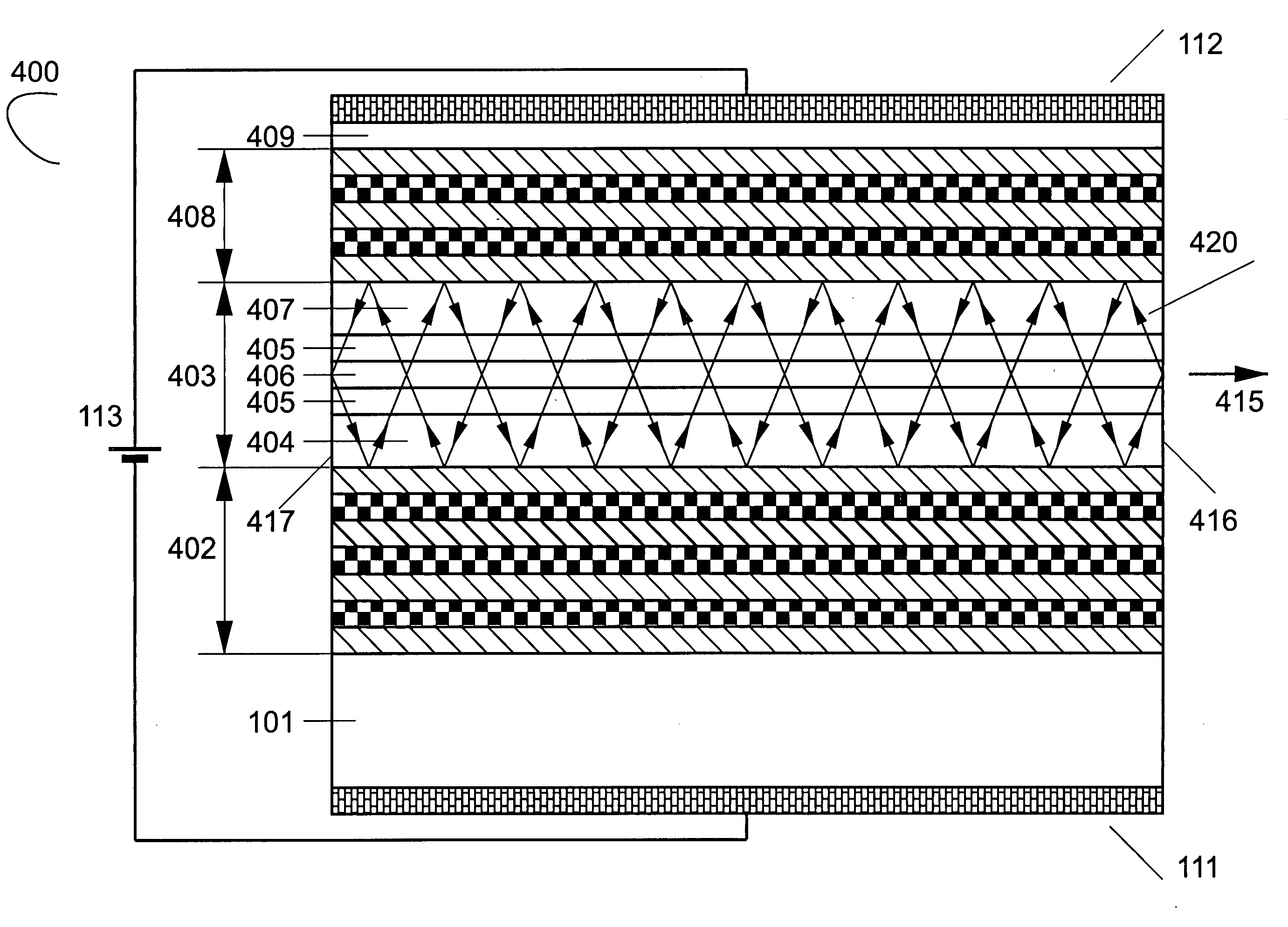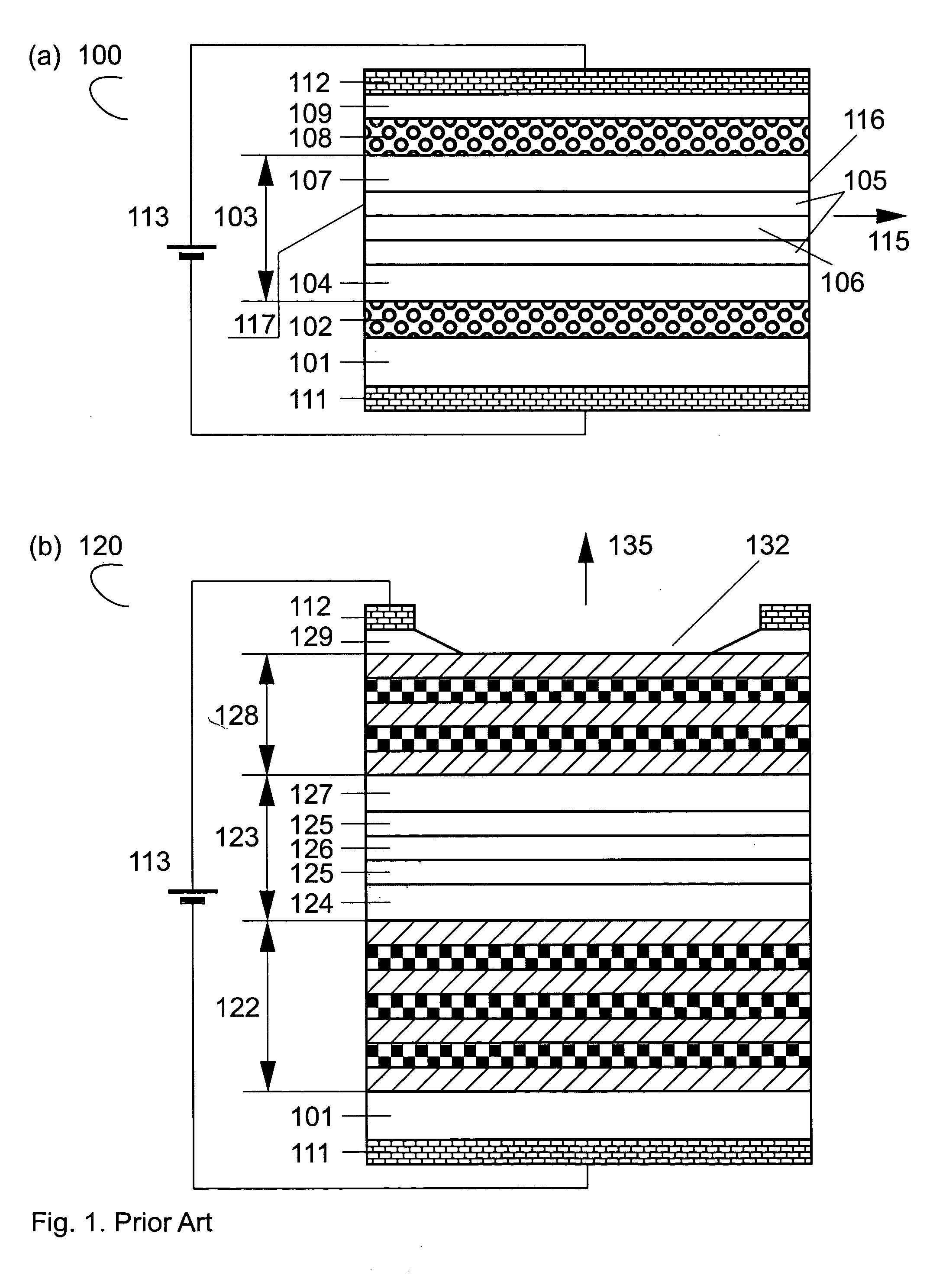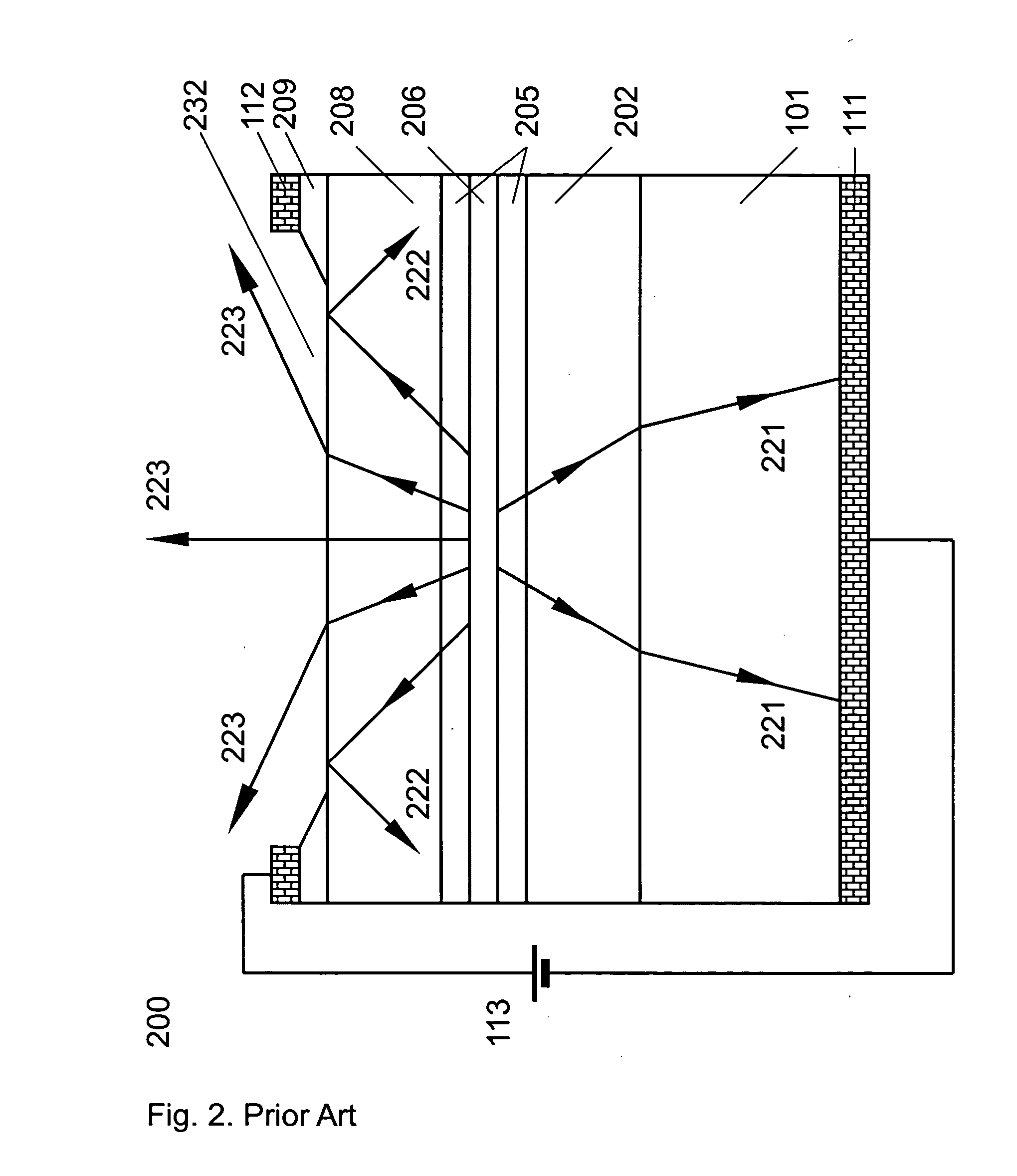Tilted cavity semiconductor optoelectronic device and method of making same
a semiconductor optoelectronic and tilting cavity technology, applied in the field of tilting cavity semiconductor optoelectronic devices and methods, can solve problems such as wavelength-stabilized lasing
- Summary
- Abstract
- Description
- Claims
- Application Information
AI Technical Summary
Problems solved by technology
Method used
Image
Examples
Embodiment Construction
A way to overcome the shortcomings of both semiconductor diode lasers, switches, optical amplifiers, photodetectors, on the one hand, and light-emitting diodes, on the other hand, is related to the concept of a tilted cavity light-emitting device. This concept is based on the fundamental physical properties of multilayered structures, i.e, on the laws of propagation, transmission, and reflection of electromagnetic waves at oblique incidence. FIG. 3 illustrates the reflectivity spectrum of a periodic multilayered structure for a few different tilt angles of the propagating TE electromagnetic wave, as described by A. Yariv and P. Yeh, in Optical Waves in Crystals. Propagation and Control of Laser Radiation, Wiley, 1984. Light comes from the medium with a refractive index n1=3.6, and the structure includes 15 periods, each period further including one layer of the Λ / 2 thickness having a low refractive index n2=3.4 and one layer of equal Λ / 2 thickness having a high refractive index n1=3...
PUM
 Login to View More
Login to View More Abstract
Description
Claims
Application Information
 Login to View More
Login to View More - R&D
- Intellectual Property
- Life Sciences
- Materials
- Tech Scout
- Unparalleled Data Quality
- Higher Quality Content
- 60% Fewer Hallucinations
Browse by: Latest US Patents, China's latest patents, Technical Efficacy Thesaurus, Application Domain, Technology Topic, Popular Technical Reports.
© 2025 PatSnap. All rights reserved.Legal|Privacy policy|Modern Slavery Act Transparency Statement|Sitemap|About US| Contact US: help@patsnap.com



